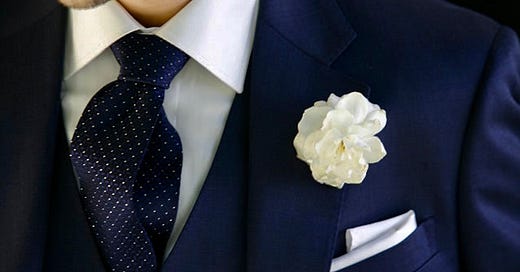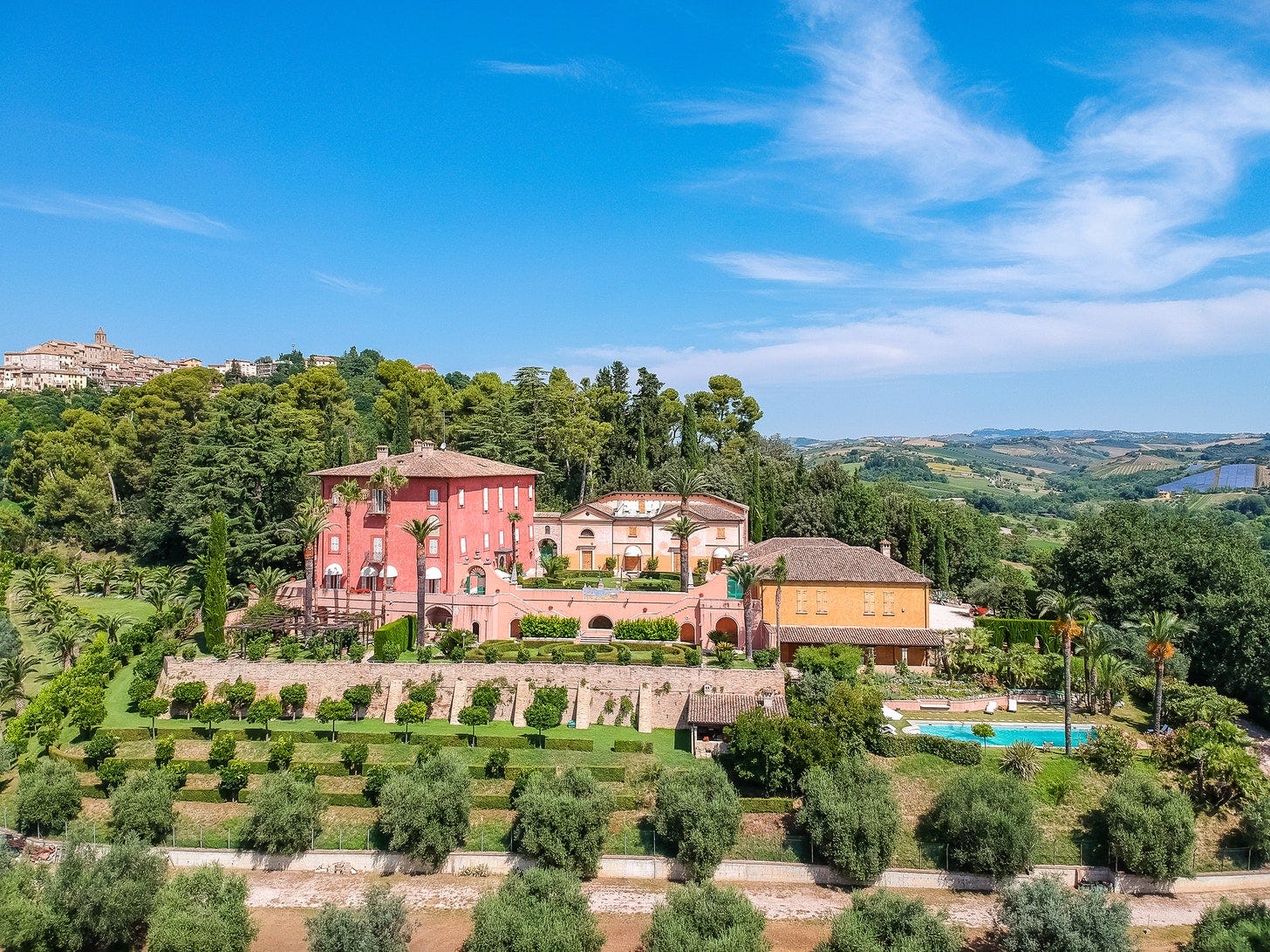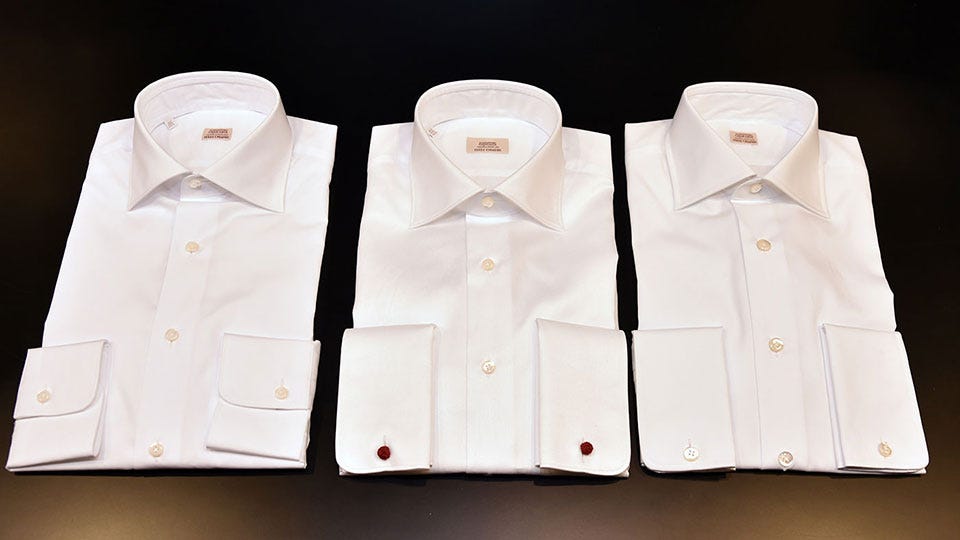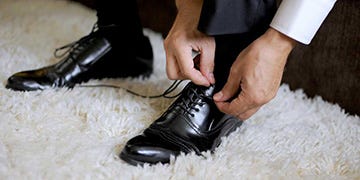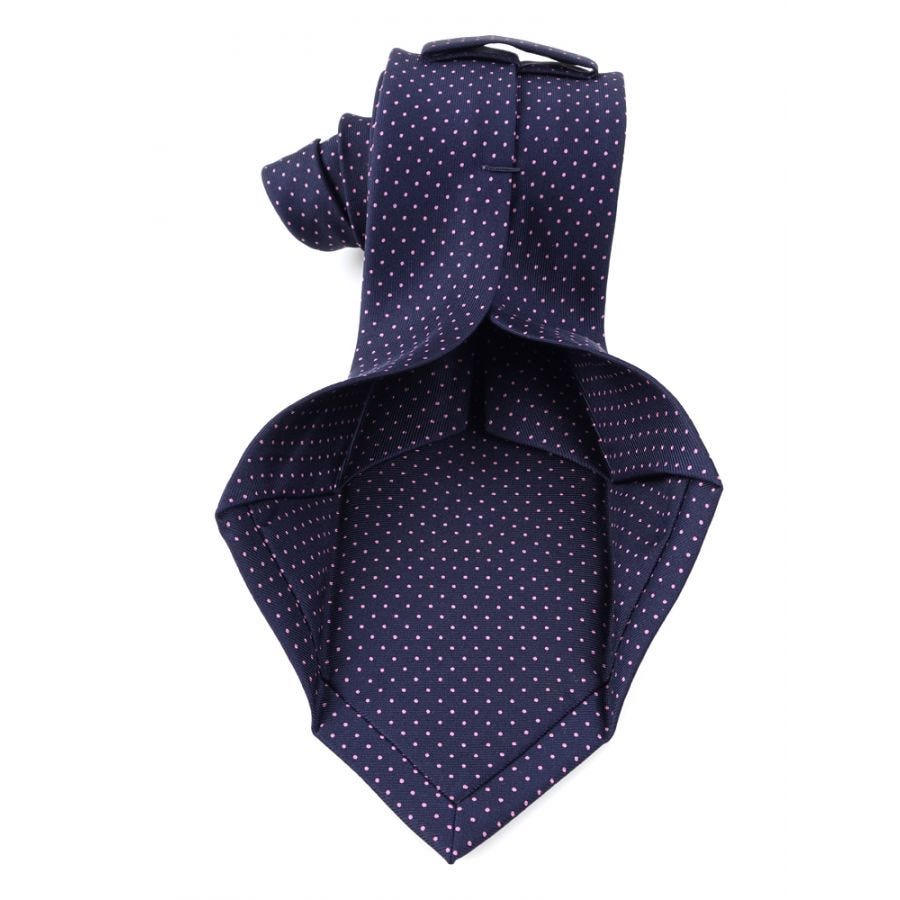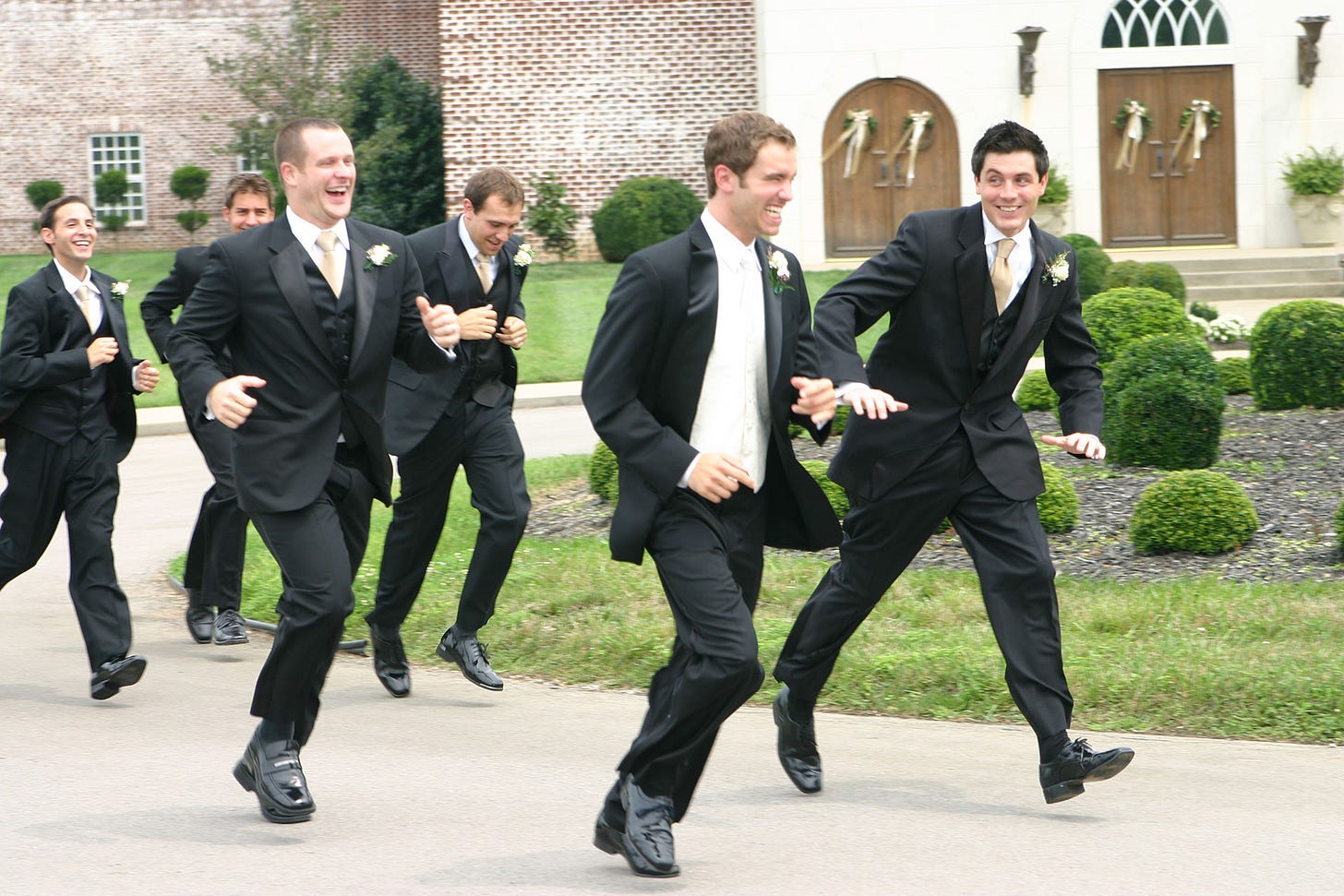Today I will continue on the topic started two Sundays ago, as it’s a very complex subject that I’ve been trying to summarize as much as possible to allow the reader to have clear information.
So, after some general rules, I went into the vast field of choosing the groom's suit and I made some points. Now it's time to talk about some fundamental details.
First of all, we should choose the dress based on the place and time of the wedding, thereby distinguishing between two broad categories:
City Weddings
For city ceremonies, the advice is to rely on classic and traditional choices because, most likely, the wedding will take place in a place of worship or at City Hall with a formal ceremony. An elegant three-piece suit with classic colors (charcoal gray and midnight blue) will be the best choice.
Countryside Weddings
The weddings that take place in the countryside can be of various kinds but, basically, can be divided into two large groups: the informal ceremonies, the so-called "country" ones, and the formal ones that mostly take place in the countryside but in contexts of great prestige.
For the former, we can have greater flexibility and choose a two-piece suit with a more casual cut and less dark colors.
For the latter, we need to focus on the utmost elegance and, if a morning coat or a half morning coat is not requested, then we need to apply the strictest rules of the classic three-piece suit in dark colors.
We must also keep in mind the time of the wedding, and here I refer back to the rules that provide for a morning coat only for morning weddings. For evening weddings, instead, I go back to the rules of last Sunday's post: wool and silk fabrics in dark colors in Fall and Winter, a lighter suit, but always in dark colors, for Spring and Summer. Also, linen is an excellent choice but pay attention to the weight because, unfortunately, the particularly light one takes on a very crumpled and unpleasant aspect to look at shortly after wearing it. Always think about the photos you will look at after a few years!
The Groom’s shirt
The choice of the shirt is the second step after the choice of the suit and determines, together with the first, the level of elegance of the whole.
The tailored shirt is the most recommended: it will be necessary to choose fabric, fit, type of collar but a good shirt maker will be able to give all the necessary indications. In any case, the shirt must be strictly white, the fit is that of a "suit shirt" so with the pleats sewn on the back, with a clean line, with initials, a French collar (attention, there are dozens of types) and double cuffs for cufflinks.
Lighter fabrics for Spring and Summer; heavier for the other seasons: high quality cotton poplin will be the best choice.
The shoes
The groom's shoes must be mandatorily black. In leather, with a leather sole (rubber is prohibited!), with laces and well polished. The shoes will be black even if the blue dress is chosen. It is not possible to deviate from that color.
The pocket handkerchief and the flower
Both. They are essential parts of the traditional groom's attire and are a great way to add personality to the suit being worn. Pocket handkerchiefs are one of the most popular accessories for men and should be chosen based on personal taste but above all based on the color of the suit and the style of the wedding. For example, a very flashy fantasy would seem out of place in the case of a formal evening wedding. But a white cotton or silk handkerchief is the best choice for a classic wedding. As for the flower, it is absolutely necessary that it be a true flower, fresh and complementary with the type of wedding. I would like to remind you that the White Gardenia is the symbolic flower of marriage.
The tie
Not all ties are the same: an important tie is made of silk and has seven folds. The long and laborious creation process makes each seven-fold tie a true work of art, a refined accessory, designed for all those demanding grooms who know how to appreciate craftsmanship. Furthermore, the color choice should be oriented among blue, cream and ivory.
The belt
The belt should be avoided. If you are wearing a vest, you should wear suspenders. But in case of a tailored suit, there is no need for anything, as the pants will fit perfectly.
All that has been said for the groom also applies to the best men, as already mentioned some time ago. And for many of the guests: those closest to the groom will be informed about the choices and will be able to adjust accordingly, thus generating a uniform but not univocal context.
Until next Sunday

